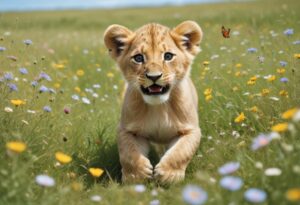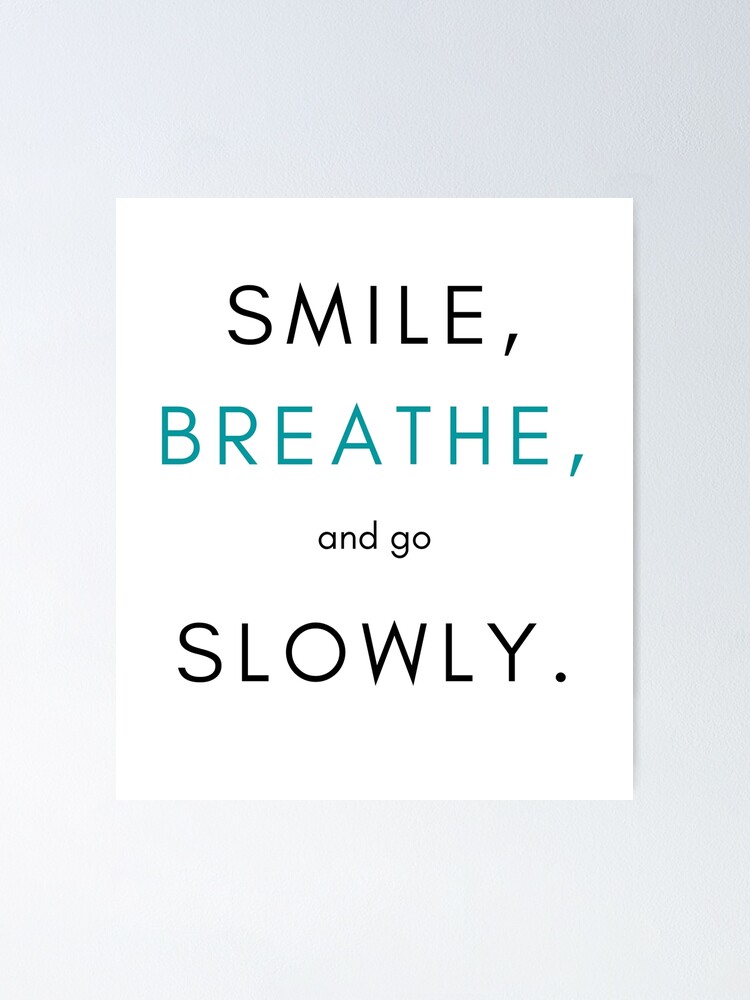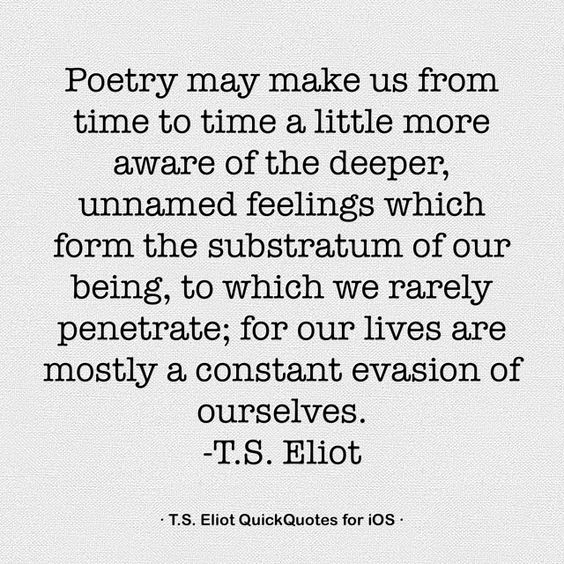jodyhollis.com
3 Little Birds

Rise up this mornin’
Smiled with the risin’ sun
Three little birds
Pitch by my doorstep
Singin’ sweet songs
Of melodies pure and true
Saying’, (“This is my message to you”)
Singing’ “Don’t worry ’bout a thing
‘Cause every little thing gonna be alright.”
Bob Marley
What the Day Didn’t Break

Losing something isn’t failure.
But it doesn’t always feel like that.
There are days the bed isn’t made.
Days the chair stays pulled out.
Days the dishes are untouched.
You don’t have to be remembered.
Still – work without naming it.
Even if no one cares.
Even if you stop caring.
Touch the tree like it matters.
And if it doesn’t – touch it anyway.
Let the room stay how it is.
Not everything adds up.
Others undo themselves while you wait.
– Some things ask nothing but your hand.
Keep your shape –
unless you can’t.
Then wait for the edges to return.
Some days you meet the hour.
Some days it stares back.
Do the next thing.
It is the turning, not the silence, that holds –
but even that slips sometimes.
The Shape Before Trust

if it was only
a flicker,
still, it was real –
and enough
to come back to
For My Dearest
The Stillness Knew First

Before It Was Clear

Some things in life ask to be held gently.
They don’t make demands. They don’t carry weight.
But they matter – and they can break.
A voice you expected to keep hearing.
A future that you expected to last forever.
The quiet thread between two people
who understood each other once.
We carry these things without thinking,
until something shifts – a crack, a silence, a feeling that doesn’t land the way it used to.
You can’t protect what’s delicate by holding on harder.
You have to learn how to carry it –
with care, with presence, without forcing it to stay the same.
Not everything is meant to last forever.
But that doesn’t make it any less real.
It was made of something fine.
And for a while,
it was in your hand.
Of course this song was actually about Frakenstein.
(Just enjoy the show)
Not Too Soon, Not Too Late

Archery demands a kind of concentration that leaves no room for hesitation. The shot depends on timing, trust, and stillness under pressure.
I have extremely limited experience in archery, but I do have a lot of experience in other martial arts. Still, here’s the point: in archery, there’s something called Target Panic. It’s when the archer freezes – or releases too early. Not from lack of skill, but because something in the moment won’t let the shot go the way it should. Nobody knows quite why it happens. It might be mental. It might be neurological.
It happens even at the highest levels.
And not just in sport.
You see it in daily life. The email you keep drafting, but don’t send. The decision that drags. The conversation you rehearse but don’t start. You’re ready, but something tenses, and you put it off. Or you rush, just to get it over with. Either way, the timing slips.
Elite archers don’t power through Target Panic. They step back. They shoot at blank targets to remove the pressure of the bullseye. They break down the process – focusing on one movement at a time. Some draw and aim without releasing; training the body to stay steady in the moment that usually tightens.
The point isn’t to force the shot. It’s to rebuild trust in your own timing.
Not too soon.
Not too late.
Just when it’s ready.
Across the Quiet

Some friendships don’t come with history. No shared past. No photographs. No story you could explain to someone else. They form in the quiet – across distance, across time zones, across the things we don’t say. They don’t ask questions. They don’t press. They’re not interested in being defined.
But they stay.
They listen when it matters. They hold space when you can’t find the words. They help, without needing to know what they’re helping with.
These friendships might not show up in your life in obvious ways. They might not be known by name. But they’re real. Sometimes more real than the ones that try to be.
This is a thank you – for that kind of friendship.
Offered without question. Given without doubt.
You may not know how much it mattered.
But it did. And it does.
Thank you.
Edges are Where the Meaning Lives

“Je n’ai fait celle-ci plus longue que parce que je n’ai pas eu le loisir de la faire plus courte.”
Blaise Pascal, Lettre XVI, Lettres Provinciales (1657)
Translated: “I have made this longer than usual because I have not had the time to make it shorter.”
It’s harder to write less.
You have to think more clearly. Decide what matters. Let go of what doesn’t.
Long writing is often just unfinished thinking. Short writing means you’ve done the work. In a crowded world, extra words aren’t neutral. They cost attention. They weaken trust.
Every word is a choice. Make it count. Say what’s needed – no more.
New Scary
This is from Seth Godin. Word for word.
“We’re thinking of having a holiday every year where kids of all ages go door to door unescorted and beg for candy, and adults dress up in expensive and revealing costumes and get drunk. Would you be likely to participate?”
And I don’t live in the US or do Halloween. But I have been there and have participated in Halloween as a young child, and I have to say that it is a very scary experience. When I was in the US, the biggest risks were razor blades or needles placed in children’s sweets. Why would you want to continue doing this? Surely there have to be better things to with your time?
Grass Flower Garden

Banana Risks and Marshmallow Slip-Ups

Bananas are radioactive.
They contain a small amount of potassium-40, a naturally occurring radioactive element.
Fortunately, scientists have developed the Banana Equivalent Dose (BED) to help put this into perspective. Essentially, if something carries the same risk as eating a banana, it’s hardly worth worrying about. So, you can enjoy your fruit without any fear of glowing in the dark.
The BED is actually a useful way to think about risks in life. If something feels as low-risk as eating a banana – familiar, harmless, and certainly not life-changing – it’s probably fine. But just because a risk seems small doesn’t always mean it’s worth taking. Sometimes, choosing the safer route is not just sensible, but the wisest course of action.
Consider crossing a road. You could wait patiently for the light to turn green, or you could dash across between the cars, relying on quick reflexes and a bit of luck. Yes, you might make it, but why gamble when the safer option is right in front of you? Both choices get you to the other side, but only one guarantees you’ll arrive without a close encounter with a heavy object.
Now, think about baking a cake. You could follow the recipe exactly -measuring the ingredients precisely, preheating the oven, and mixing everything just right. Alternatively, you could estimate the quantities, and hope for the best. Occasionally, that might work. But more often, you’ll end up with a brick rather than a cake. Following the recipe, much like taking the safer route in life, generally leads to much better outcomes – especially if the goal is a cake you can actually eat.
Then there’s my measure, the Marshmallow Equivalent Dose (MED). Imagine making a minor social mistake like mispronouncing someone’s name or sending an email to the wrong person by mistake. The impact? Minimal – perhaps a little embarrassing, but hardly catastrophic. It’s about as bad as accidentally sitting on a marshmallow – soft, slightly sticky, but not life-changing. However, when the stakes are much higher – such as deciding whether to invest your savings in a risky venture – it’s usually better to pause, consider the risks, and think carefully before acting.
Ultimately, life isn’t always about charging into the most daring, risk-filled decisions. Sometimes, the smart choice is the safer one, where the worst that could happen is a minor stumble, like tripping over a marshmallow. Success doesn’t require reckless decision-making. More often than not, it’s about making thoughtful, well-considered choices.
Then again, you could spend your whole life avoiding puddles and still get caught in a downpour. Playing it safe might keep you dry, but sometimes the best stories come from dancing in the rain.
Why You Won’t Make the Olympics – But Could Still Change the World

A recent poll shows that about one in four Britons believe they could qualify for the next Olympics with just four years of training.
That’s ridiculous.
Qualifying for the Olympics is the pinnacle of athletic achievement. Getting there isn’t just about hard work – genetics play a huge role. Elite athletes often possess physical traits that give them a natural edge. These traits are inborn, not trained.
Even with the right genetics, becoming an Olympian demands extreme commitment. Athletes start young, sometimes training for thousands of hours before they even reach their teens. They train intensely, often for decades, with no guarantee of success.
The resources required are massive teams of coaches, nutritionists, specialised equipment, and substantial financial backing (and no regular income). It’s a marathon, not a sprint, and most people simply don’t have the time or resources to make it happen.
It’s beyond the reach of almost all normal people.
BUT while the Olympic dream might be out of reach, four years is still enough to achieve something spectacular.
You could write and publish a book that changes minds, master a new language, start a new career, or build a nonprofit that makes a real difference. You could launch a startup that disrupts an industry, transform yourself physically and mentally, or become an expert in a new field.
Focused effort over time.
We overestimate what we can do in one year and underestimate what we can do in a decade. Four years is more than enough to do something extraordinary.
The Song that Every Artist Wished that They Had Written
‘Because the Night’ – Bruce Springsteen, Patti Smith, U2
Inspiring Future Thinkers
If I were to redesign a century-old industrial curriculum, with an emphasis on self-directed learning, here’s what I’d propose:
Statistics: Seeing the World Clearly
Classical mathematics – like differentiation, integration, and algebra – teaches essential problem-solving and theoretical concepts. Differentiation helps us understand changes, integration deals with calculating areas, and algebra focuses on finding unknowns. These skills are crucial for fields like engineering and physics. However, in today’s world, statistics offers more practical value. It allows us to analyze real-world data, identify trends, and make informed decisions. While classical math is important for specific areas, statistics is vital for interpreting the data we encounter in everyday life and across various professions.
Play, Think, Win: The Power of Gaming in Learning
Gaming and game theory are more than just entertainment; they provide valuable lessons in relationships, risk management, and decision-making. These tools help students prepare for real-world unpredictability by turning abstract ideas into practical knowledge. By understanding strategy, competition, and negotiation, students gain essential skills for economics and business, all while actively engaging in learning.
Meta-Learning: Learning How to Learn
Meta-learning, or “learning how to learn,” is crucial because it helps us understand and improve our learning methods. By knowing how we learn best, we can study more effectively and retain information longer. Meta-learning also builds resilience, keeping us motivated and open to continuous growth. This approach makes learning an active and rewarding process, setting us up for lifelong success.
Words Matter: The Importance of Communication
Effective communication is fundamental. Mastery of listening, speaking, reading, and writing equips students to work with others, express their ideas, and build confidence. Good communication is essential in all aspects of life and work.
Crack the Code: Digital Mastery
Learning to code sharpens problem-solving, logical thinking, and creativity. Coding challenges us to tackle complex problems and build persistence. As digital literacy becomes as important as reading and writing, coding should be a core part of education, preparing students with the skills they need for today’s world.
Create to Innovate: The Role of the Arts
The creative arts are essential in a reimagined curriculum because they foster creativity, critical thinking, and emotional intelligence. Activities like art, music, and drama allow students to express themselves, explore new ideas, and understand the world better. These experiences enhance problem-solving, build confidence, and improve communication, helping to develop well-rounded individuals who can think creatively and connect with others.
Connecting the Dots: Integrating History, Geography, and Economics
History, geography, and economics are closely connected. History provides context for economic systems and geographical boundaries, while geography influences economic activities and historical events. Economics explains how resources are distributed and how these patterns shape history and geography. Integrating these subjects offers students a comprehensive understanding of societal evolution and global challenges, giving them a clearer view of the world.
Lions, Mice & Antelopes

This is a bit whimsical and an old story, but it’s worth considering. As a lion, each day I face a choice: should I hunt mice or antelope? Mice are everywhere – easy to catch, requiring little effort. But the energy I spend chasing these small wins often outweighs their value. At the end of the day, I’m still left hungry.
Then there are the antelopes – bigger, faster, and far more challenging. Hunting an antelope requires strength, speed, and strategy. It’s not about quick wins. So, when do I hunt mice, and when do I hunt antelope?
There are times when the mice are necessary, but they can’t be my main focus. It’s easy to get caught up in chasing low-hanging fruit, but that’s not where the real value lies. Most of my energy should be directed toward the antelopes – the big opportunities that require more but offer much more in return. It’s risky, yes, and sometimes I might come up empty-handed. But the rewards of catching an antelope are worth the effort.
So every day, I need to ask myself: Did I spend my time hunting mice or antelope?
Sunday Morning Reflections
Tôi là một người đam mê nhiếp ảnh phong cảnh
“There is something infinitely healing in the repeated refrains of nature – the assurance that dawn comes after night, and spring after winter. – Rachel Carson”
21st Century Stoicism
Stoicism, a philosophy that started in ancient Greece and evolved in Rome, is having a moment in the 21st century, especially among tech entrepreneurs and professionals. So, what’s behind this ancient philosophy’s modern-day appeal?
At its core, Stoicism is about ‘eudaimonia’ – a concept often translated as “happiness,” but it’s more about “flourishing.” In the ancient world, eudaimonia meant being “favoured by the gods.” Today, it’s about living with purpose, integrity, and finding fulfilment in a well-lived life.
What’s driving Stoicism’s resurgence is its focus on internal well-being rather than chasing external success. It teaches that true happiness isn’t something you seek outside yourself – it’s something you build from within. By focusing on what you can control – your thoughts, actions, and responses—you create a steady sense of well-being.
This philosophy isn’t just theory; it was put into practice by historical figures like Marcus Aurelius, Seneca, and Epictetus. Marcus Aurelius, a Roman Emperor, wrote ‘Meditations’ whilst ruling an empire. Seneca, an advisor to Emperor Nero, wrote extensively on ethics, even as he was forced to take his own life. And Epictetus, who started life as a slave, taught that true freedom comes from mastering your mind, not your circumstances.
Stoicism offers a practical framework for staying focused and clear-headed. It’s a reminder that real happiness isn’t about external achievements but about mastering your inner world. Stoicism’s focus on virtues like wisdom, courage, justice, and temperance provides timeless principles that are as relevant now as they were thousands of years ago.
Stoicism and Strategies for Optimizing Your Life
Being Blue
Still one of my favourites:
She had blue skin,
And so did he.
He kept it hid
And so did she.
They searched for blue
Their whole life through,
Then passed right by—
And never knew.
Shel Silverstein
Ice Cream Castles
Rows and floes of angel hair
And ice cream castles in the air
And feather canyons everywhere
I’ve looked at clouds that way
But now they only block the sun
They rain and snow on everyone
So many things I would have done
But clouds got in my way
I’ve looked at clouds from both sides now
From up and down, and still somehow
It’s cloud illusions I recall
I really don’t know clouds at all
Moons and Junes and Ferris wheels
The dizzy dancing way you feel
As every fairy tale comes real
I’ve looked at love that way
But now it’s just another show
You leave ’em laughing when you go
And if you care, don’t let them know
Don’t give yourself away
I’ve looked at love from both sides now
From give and take, and still somehow
It’s love’s illusions I recall
I really don’t know love at all
Tears and fears and feeling proud
To say “I love you” right out loud
Dreams and schemes and circus crowds
I’ve looked at life that way
But now old friends are acting strange
They shake their heads, they say I’ve changed
Well something’s lost, but something’s gained
In living every day
I’ve looked at life from both sides now
From win and lose and still somehow
It’s life’s illusions I recall
I really don’t know life at all
I’ve looked at life from both sides now
From up and down, and still somehow
It’s life’s illusions I recall
I really don’t know life at all
You can’t put your arms around a memory

Sometimes the strangest lyrics make the most sense.
Here is one: “You can’t put your arms around a memory”.
The bittersweet memory of love lost.
I love punk rock. Johnny Thunders.
Sunrise

My sun sets to rise again – Robert Browning
Yak Shaving thanks to Seth
Seth Godin – Serial Marketer – came up with a brilliant concept called “Yak Shaving.” Here’s my twist.
Yak Shaving is the final, unexpected step in a long chain of tasks that you end up doing when you find something that needs to be done.
Imagine you decide, “Today’s the day I’m going to polish the car.” “Oh no, I’ve just remembered the hosepipe got cracked during the last water outage. I’ll need to buy a new one from Builders Warehouse.”
“But Builders is up the road, and I need to put oil in my car. So I will go down to the garage and buy oil. But I need to go up the hill to draw money to buy oil. But there is no electricity, so I will have to ask the neighbour to help open the garage door, but I can’t do that because I haven’t spoken to the neighbour for the last few months.”
And before you know it you you’re at the zoo, shaving a yak, all so you can polish your car.
“This Yak Shaving phenomenon tends to happen to some of us more than others, but it becomes particularly frustrating when groups are involved. This is why solo entrepreneurs and small businesses are often more efficient—they have fewer yaks to shave.”
So, what’s the solution?
Don’t go to Builders for the hosepipe.
The moment you sense you’re heading down a path toward a Yak Shaving expedition, consider making a compromise. Doing it well now is far better than doing it perfectly later.
https://seths.blog/2005/03/dont_shave_that/
Quiet Weeks
Someday, in years to come, you will be wrestling with the great temptation, or trembling under the great sorrow of your life. [‘Once again’ – my addition] But the real struggle is here, now, in these quiet weeks. Now it is being decided whether, in the day of your supreme sorrow or temptation, you shall miserably fail or gloriously conquer. – The Purpose and Use of Comfort
Waterfalls

Remedies
“Run down the list of those who felt intense anger at something: the most famous, the most unfortunate, the most hated, the most whatever: Where is all that now? Smoke, dust, legend…or not even a legend. Think of all the examples. And how trivial the things we want so passionately are.” Not my writing.
Remember that it doesn’t really matter
“Alexander the Great and his mule driver both died and the same thing happened to both.”
— Marcus Aurelius
On the Quality of Your Thoughts – Marcus Aurelius

“The tranquility that comes when you stop caring what they say. Or think, or do. Only what you do.”
Marcus Aurelius (121-180 AD), Roman emperor and Stoic philosopher, is renowned for Meditations.
4000 Weeks to Live
What I am reading; 4,000 weeks
This doesn’t do it justice. But it is my extremely short summary of Cosmic Insignificance.
“The average human lifespan is absurdly short. Assuming that you live to 80, that is 4,000 weeks. Human civilization is about six thousand years old, and we think that is a long time. In every generation there were a few people that lived to 100.
By this measure, the Egyptians lived 35 lifetimes ago. Jesus was born 20 lifetimes ago, and the Renaissance happened 7 lifetimes back. 5 lifetimes ago, Henry VIII was King of England. The number of lives you’d need in order to span the whole of civilization, 60, is the number of friends that can squeeze into a living room.
Our own lives will be a tiny little flicker in the scheme of things. A pinpoint. In other words, we almost certainly won’t put a dent in the universe.
But the theory is that once you’re no longer burdened by such an unrealistic definition of a “life well spent,” you’re free to consider the possibility that a far wider variety of things might qualify as meaningful ways to use your time.
This is called Cosmic Insignificance theory. And I have 1,200 weeks to go if the theory is correct, or 2,400 if I am very lucky.
Time is not a measure of a life well-lived, but what you choose to do with your time is important.
Thank you Tim Ferriss. You can read the whole chapter here:
Seneca – On Being Calm
Smile, Breathe, Go Slowly

Spreading Stories
How do you get noticed?. Small businesses, not for profits, startups? It’s easy to believe that the goal of marketing is to get as much attention as possible, promote, maybe even shout. It’s tempting to focus on your story as the most important, and decide that your work is to share that story to everyone near you. You believe that your story is important. If you just tell enough people, write better, and make it clearer, use social media and you will be noticed.
But that’s not how the world works. Ideas that spread win. Build something remarkable, and then the conversations start. Remarkable means worth making a remark about.
Es ist toll, wenn euch die Bilder Freude bringen
Choosing a Path
I saw my life branching out before me like the green fig tree in the story. From the tip of every branch, like a fat purple fig, a wonderful future beckoned and winked. One fig was a husband and a happy home and children, and another fig was a famous poet and another fig was a brilliant professor, and another fig was Ee Gee, the amazing editor, and another fig was Europe and Africa and South America, and another fig was Constantin and Socrates and Attila and a pack of other lovers with queer names and offbeat professions, and another fig was an Olympic lady crew champion, and beyond and above these figs were many more figs I couldn’t quite make out. I saw myself sitting in the crotch of this fig tree, starving to death, just because I couldn’t make up my mind which of the figs I would choose. I wanted each and every one of them, but choosing one meant losing all the rest, and, as I sat there, unable to decide, the figs began to wrinkle and go black, and, one by one, they plopped to the ground at my feet. – Sylvia Plath
On Being Yourself
She had blue skin,
And so did he.
He kept it hid
And so did she.
They searched for blue
Their whole life through,
Then passed right by—
And never knew.
Shel Silverstein
T.S. Eliot – deeper poetry

For Vacky

water lillies

The Art and Science of Language Probability
Artificial Language models might seem like magic, but at their core, they are sophisticated engines of probability. They don’t understand language or concepts the way humans do. Instead, they generate responses by predicting what comes next in a sequence of words based on statistical patterns learned from vast amounts of data.
This illusion of magic stems from the model’s ability to produce coherent and contextually relevant text. However, behind the scenes, there’s no true understanding or consciousness. The model doesn’t “know” anything; it simply calculates the likelihood of various word combinations and chooses the most probable one based on its training.
The real marvel lies not in the magic but in the intricacy of these probabilistic algorithms. Each response is a result of complex mathematical computations that analyze patterns in language and make educated guesses about what should come next. This predictive capability allows the model to generate text that feels surprisingly insightful or relevant, even though it’s all based on patterns rather than comprehension.
Understanding this helps demystify AI’s capabilities. It’s not about magical thinking but about leveraging sophisticated tools designed to handle language probabilities. As we interact with these models, we tap into a blend of advanced mathematics and vast datasets, which together create the appearance of magical intelligence.
So, while it may seem like AI is performing wonders, it’s really about mastering the art of predicting and combining language in ways that mimic human conversation. The more we appreciate this underlying mechanism, the better we can harness AI’s power to enhance our work and creativity.
Whimsy & Wonder

The Power of AI in Creativity
AI is transforming the creative world, opening up new possibilities in art, music, and storytelling. It sifts through massive amounts of data, identifies patterns, and generates ideas at amazing speed. It’s learned from countless examples. This technology shows us that our creative potential is much bigger than we ever imagined.
The real criticism of AI is that iT just re-creates what has been done before. But in my experience, it can help us get past creative blocks. AI throws out fresh ideas. It can quickly generate multiple versions of a concept. This rapid prototyping means means that it is possible to test more ideas, fail faster, and find better solutions.
It is extremely boring talking to an AI but here is a summary after about 20 tries:
“We started by tossing around taglines like “AI: Fail smarter, create faster, and innovate continuously” and “AI: Fail smarter, create faster, and achieve the extraordinary,” but they fell a bit flat and felt too predictable. Your feedback was clear: we need something with more punch and unpredictability, akin to Nike’s “Just Do It.”
So, we pivoted and tried out taglines like “AI: Fail smarter, create faster, and turn the unexpected into reality” and “AI: Fail smarter, create faster, and challenge the possible.”
In the end:
“Fail smarter, create faster, and dare the impossible”
hit the mark perfectly. It’s bold, memorable, and exactly the kind of creative spark we were aiming for.
Eventually.
Release vs. Perfect
Launch when you’re “ready” or wait for “perfect.” ‘Ready’ means the job is done. It is meeting your promise. Perfection is a lot harder. It’s expensive, time-consuming, and leads to missed opportunities.
Delivering means when you get priceless feedback – even if you don’t like it. Being ready keeps you agile. You adapt, you evolve, and you stay relevant. Deliver on time, and keep moving forward.
sunshine

Naming and Starting
Rome was built in a day.
It began when someone named the project. ‘Rome’.
But it wasn’t finished in one day. And it still isn’t. Sometimes we give up on the beginning, unwilling to start ‘Rome’ unless we’re sure we can finish it perfectly and then we wander off.
Google started as a simple search engine project by Larry Page and Sergey Brin in a garage. Jeff Bezos started Amazon as an online bookstore in his garage. The Wright brothers’ first plane was terrible. It wasn’t perfect, but it flew, and changed the world.
Blue



